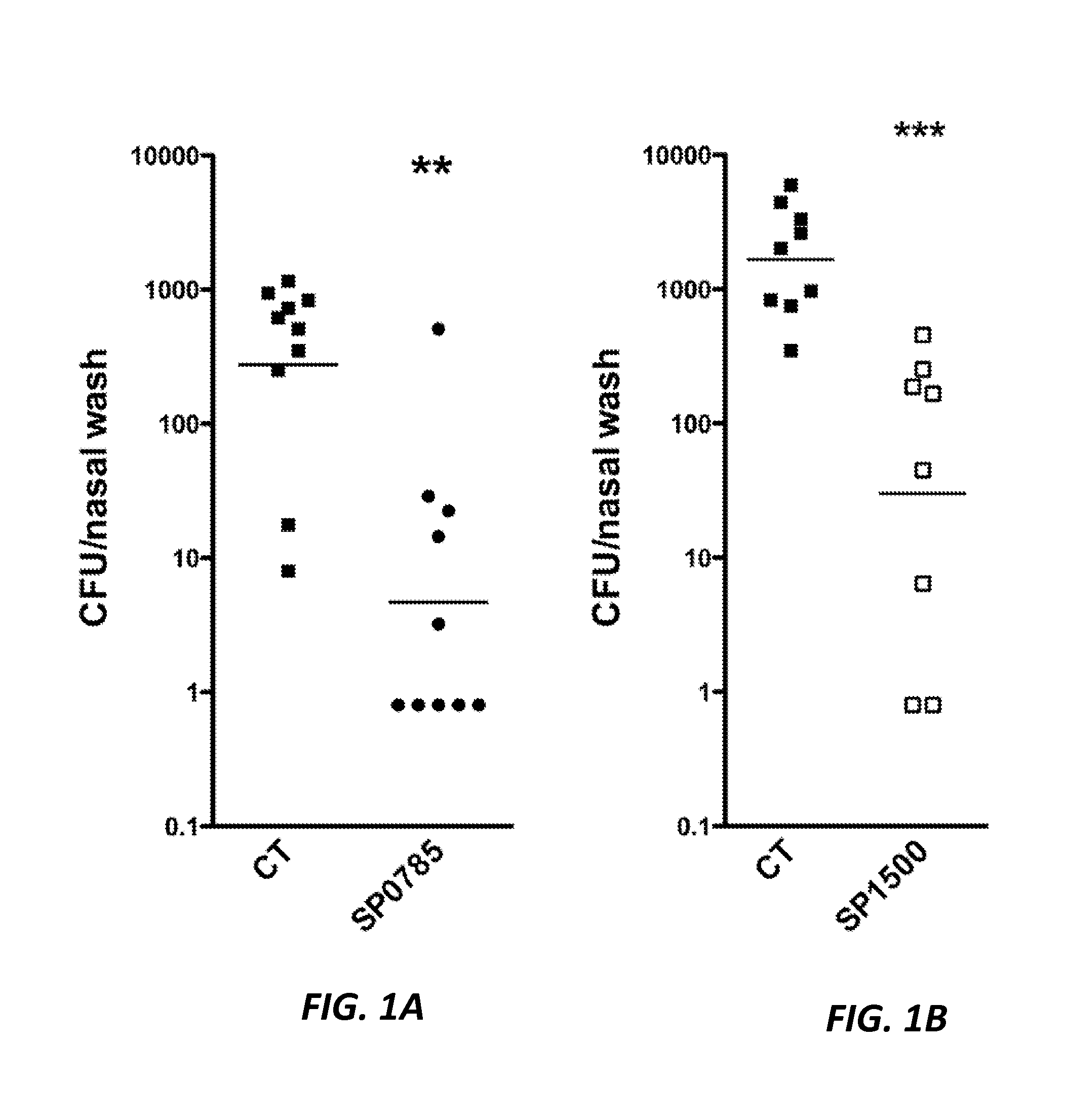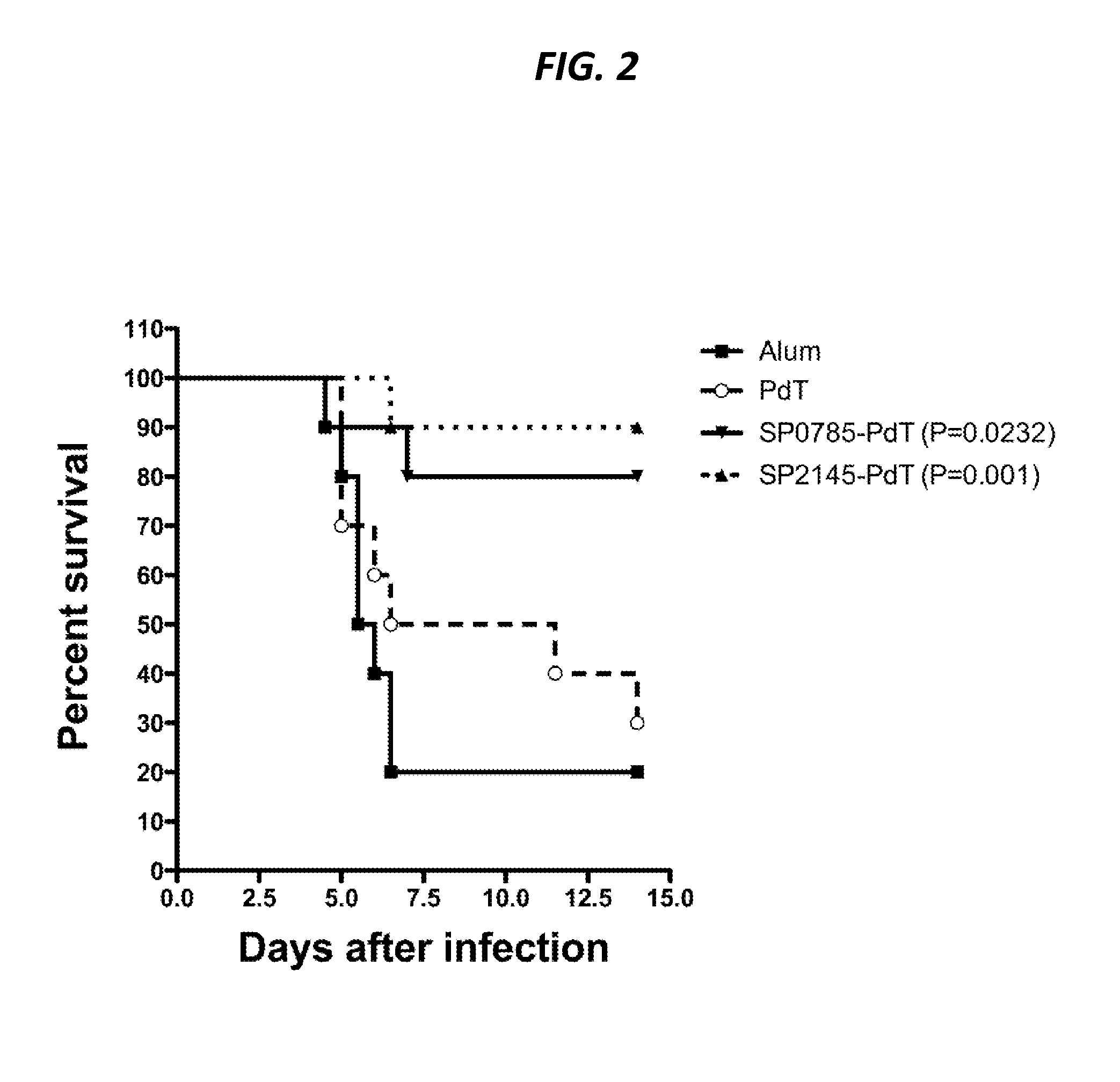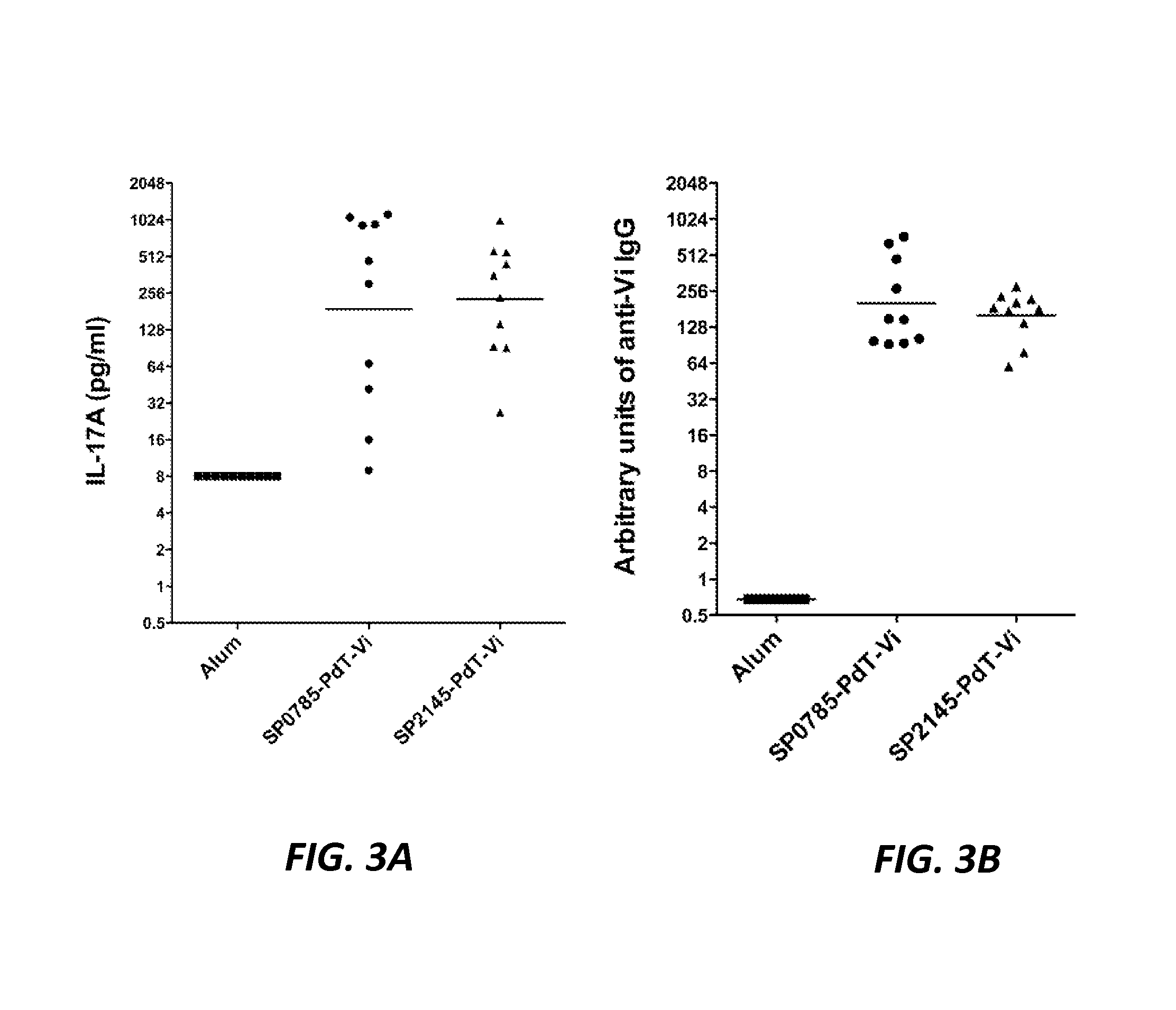Protein antigens that provide protection against pneumococcal colonization and/or disease
a technology of pneumococcal colonization and antigens, applied in the field of protein antigens, can solve the problems of not fully optimizing the extraction or identification of the full antigen repertoire, and the cost of production and delivery, so as to reduce the risk of infection, inhibit the progression of infection, and alleviate the effect of ons
- Summary
- Abstract
- Description
- Claims
- Application Information
AI Technical Summary
Benefits of technology
Problems solved by technology
Method used
Image
Examples
example 1
Selection of Protein Candidates by Bioinformatic Analysis
[0426]At present, there are at least 42 S. pneumoniae sequences available from the integrated microbial genomes website (world wide web: “llimg.jgi.doe.gov / cgi-bin / w / main.cgi”). Beginning with the sequenced TIGR4 strain, the inventors analyzed the genome for predicted secretion signal peptides and cell wall anchor motifs. The inventors identified 335 proteins with a secretion signal peptide in TIGR4 and 15 proteins with possible cell wall anchor motifs.
[0427]The protein library was further narrowed down to 76 proteins based on the following parameters which were chosen a priori:
[0428](a) Conservation across all the sequenced pneumococci (>90% identity at the amino acid level).
[0429](b) Exclusion of any protein that had >40% homology with proteins in the human genome
[0430](c) Exclusion of proteins that contain an extracellular domain smaller than 100 amino acids.
[0431]The breakdown of the 76 proteins is as follows: 23 hypotheti...
example 2
Screening Antigens from Mouse Splenocytes and Human Peripheral Blood Mononuclear Cells (PBMC)
[0432]60 proteins out of 80 genetic constructs were successfully cloned and expressed in, then purified from, E. coli. These proteins were then used in stimulation experiments with either mouse splenocytes or human PBMC to evaluate the ability of these proteins to recall a potent IL-17A response (elicitation of IL-17A responses is a predictor of immunogenicity and protection against colonization by a pneumococcal antigen—(see Moffitt K L, Gierahn T M, Lu Y J, et al. T(H)17-Based Vaccine Design for Prevention of Streptococcus pneumoniae Colonization. Cell Host Microbe 2011; 9:158-65).
[0433]The mouse splenocytes were obtained from three sources: 1. Mice previously immunized with a whole cell vaccine (WCV); 2. Mice previously colonized with a single strain of S. pneumoniae for 10 days and 3. Mice were sequentially colonized with S. pneumoniae serotype 6B, 14F and 19F strains. These three differ...
example 3
SP0785 and SP1500 Provide Protection Against Colonization
[0434]The inventors then tested the 14 antigens to see if they could provide protection in a mouse colonization model. For each protein tested, 5 mg of each antigen were mixed with adjuvant CT and used to immunize mice twice weekly. Mice were challenged with a serotype 6B pneumococcal strain and the protection was accessed 7 days later for pneumococcal colonization in the nose. Two proteins, SP0785 and SP1500 showed significant protection compared to the adjuvant alone group (p=0.0023 and p=0.0009 for SP0785 and SP1500, respectively) (FIG. 1). The other 12 antigens tested were not protective in this colonization model.
PUM
| Property | Measurement | Unit |
|---|---|---|
| molecular mass | aaaaa | aaaaa |
| molecular mass | aaaaa | aaaaa |
| pH | aaaaa | aaaaa |
Abstract
Description
Claims
Application Information
 Login to View More
Login to View More - R&D
- Intellectual Property
- Life Sciences
- Materials
- Tech Scout
- Unparalleled Data Quality
- Higher Quality Content
- 60% Fewer Hallucinations
Browse by: Latest US Patents, China's latest patents, Technical Efficacy Thesaurus, Application Domain, Technology Topic, Popular Technical Reports.
© 2025 PatSnap. All rights reserved.Legal|Privacy policy|Modern Slavery Act Transparency Statement|Sitemap|About US| Contact US: help@patsnap.com



